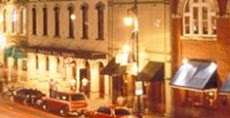By Tony Plohetski
AMERICAN-STATESMAN STAFF
Wednesday, January 23, 2008
Austin Police Chief Art Acevedo wants to install security cameras in pedestrian-heavy and crime-ridden areas of the city that would allow officers to monitor activity from afar and conduct what some call "virtual patrols."
Acevedo said in an interview this week that he wants to start the project in the Sixth Street entertainment district in coming months and expand it to areas that include 12th and Chicon Streets in East Austin, Rundberg Lane and Lamar Boulevard in North Austin and along Montopolis Boulevard in Southeast Austin before the end of 2008.
He said he plans to soon begin exploring ways to pay for the project — possibly through federal grants — and working out logistics such as who would monitor the camera footage. Acevedo said one possibility includes hiring retired officers who would watch the videos 24 hours a day, seven days a week and who could call officers on the street when they see a crime in progress.
Other details, such as where the cameras would be positioned and how long the footage would be preserved, still need to be worked out, Acevedo said.
"I've been here about six months, and as I travel around the city, I have been approached by residents in high-crime areas who are not only asking, but who are really starting to demand, the use of technology," Acevedo said.
Such police cameras have swept the nation in recent years, especially in medium to large cities, where officials continue looking for new ways to cut crime. The trend began nationally in Acevedo's hometown of Los Angeles in 2004 but has since been introduced in other cities, including Dallas, which has a 40-camera system downtown. Police say the cameras reduce crime, bolster criminal cases with video evidence and serving as a "police force multiplier" by allowing one officer to be several places at once.
However, opponents have said the cameras constitute an unnecessary government surveillance and raise concerns of privacy rights. "You have to have some limits on government," said Jim Harrington, director of the Texas Civil Rights Project. "They have to respect people's right to privacy. I think there is too much potential that makes this dangerous and gives too much power to government."
Courts have upheld the legality of the police cameras. Critics nationwide also have argued that police have no conclusive evidence to show that video surveillance contributed to a crime decrease and that the cameras only pushed criminal activity a couple of blocks away, out of the camera's sight. Austin police and representatives from downtown business associations last year began discussing the possibility of adding cameras along Sixth Street and traveled to Dallas to study its system, which officials added in January 2007. Bill Brice, program director for security and maintenance for the Downtown Austin Alliance, said the visit intensified interest by his association in supporting the cameras. The organization also is considering helping to pay for the Sixth Street camera system, he said.
Dallas police received a grant to pay for its $850,000 system of 40 cameras, which are placed on utility poles or stoplights throughout downtown, including areas around the Dallas Convention Center and in the West End historical district. Deputy Police Chief Vincent Golbeck said crime dropped 12 percent from 2006 to 2007 in downtown. More striking, said Paul Lindenberger, director of the Downtown Dallas, an association of businesses, is that crime dropped 28 percent during the first two months of 2007, compared with the same period in 2006. However, Golbeck said that burglary of vehicles in parking garages appears to have increased.
The Downtown Dallas association is now working with private business owners to seek their help in paying for 40 more cameras throughout downtown.
Original story

